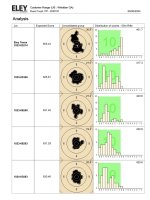I think a .22lr could be a neat application for this barrel. Especially when you consider the cost for the structured barrel and the barrel life a .22lr has.
Any benefits would have to be VERY tangible in order for it to make sense on something like a .300NM, when you have only ~1,000 rounds of barrel life.
I'm not saying these do or don't "work", that I don't know. But if I was a prospective buyer, the benefits would have to be readily apparent in order for it to make economic sense in most applications.
TACCOM seems to place a lot of stake in their assertion that the structuring process allows the barrel to dissipate heat quickly (while apparently throwing no mirage off the surface).
Does a precision 22lr get warm enough for something like that to be beneficial?



